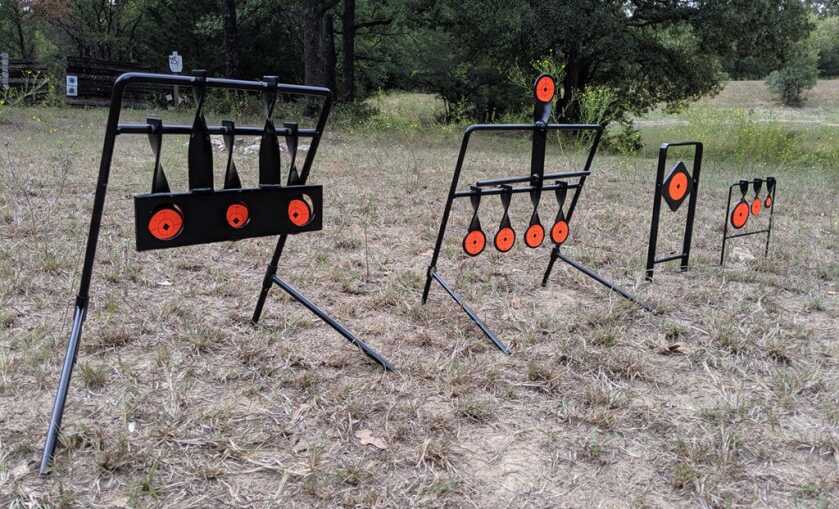
You’ve probably seen Birchwood Casey’s little metal targets at Walmart or Cabela’s and thought, “I’ll pass. Those look cheap.”
I get it but don’t judge a book by its cover. These targets are designed for rimfire cartridges, and in that application, they work great. Plus, at $30-$55 a pop, Birchwood-Casey’s targets are small enough to be challenging and cheap enough to buy four or five for the price of one centerfire-rated target. They’re also light, portable, reactive, and easy to set up. If you have access to your own range, go ahead and pull the trigger on your next trip to Walmart.
Why Steel?
I shot my first firearm in my late teens, so I still remember what appeals to a new shooter. It ain’t paper targets. Paper targets are great for experienced shooters because they provide more specific information about shot placement and group size. But for new shooters? Give them something that moves and goes ping! Since .22LR is the best caliber to use when taking out a first-time shooter, Birchwood-Casey’s targets make a lot of sense.
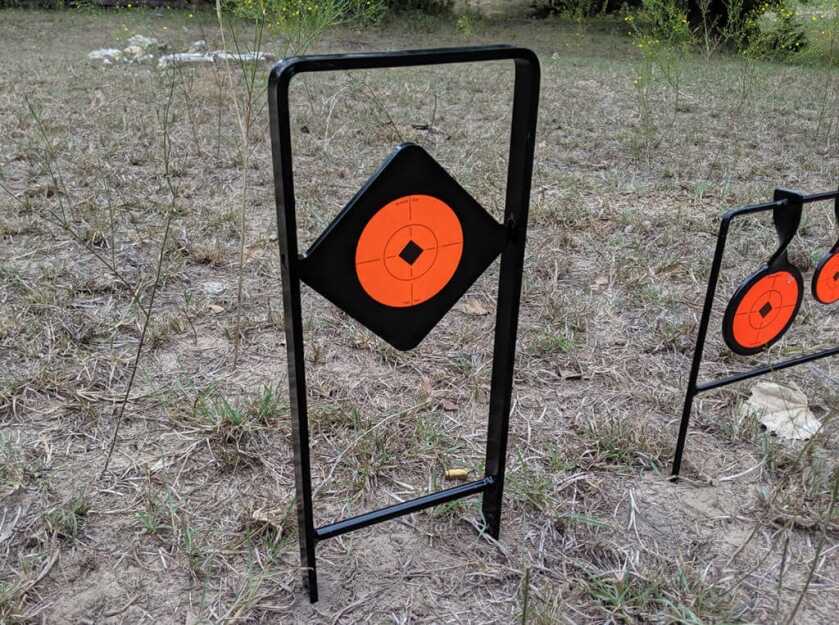
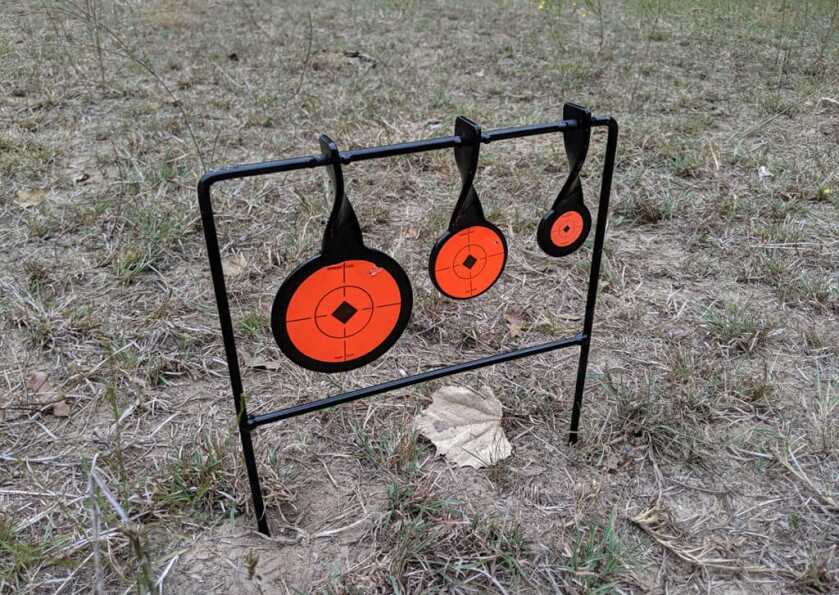
The same applies to young shooters. Cans, milk jugs, and even sticks in a pond are all great targets for kids because they can tell when they’ve hit something. Steel is even better because of its durability. Forget scrounging around the recycling bin for empty cans—just grab your steel targets and head to the range.
Steel targets can also be configured for different skill levels. For this review, I requested four different targets ranging from very easy to relatively challenging:
The King of Diamonds and the Qualifier Spinner feature large targets free of obstruction. These would be easy for new and young shooters to hit, but you could increase the difficulty by moving farther away.
The Back Drop and Gallery are more challenging. Both products feature smaller targets and require direct hits to force the hanging arms up and around. The Back Drop also uses holes of various sizes which the bullets must pass through to make a direct hit.
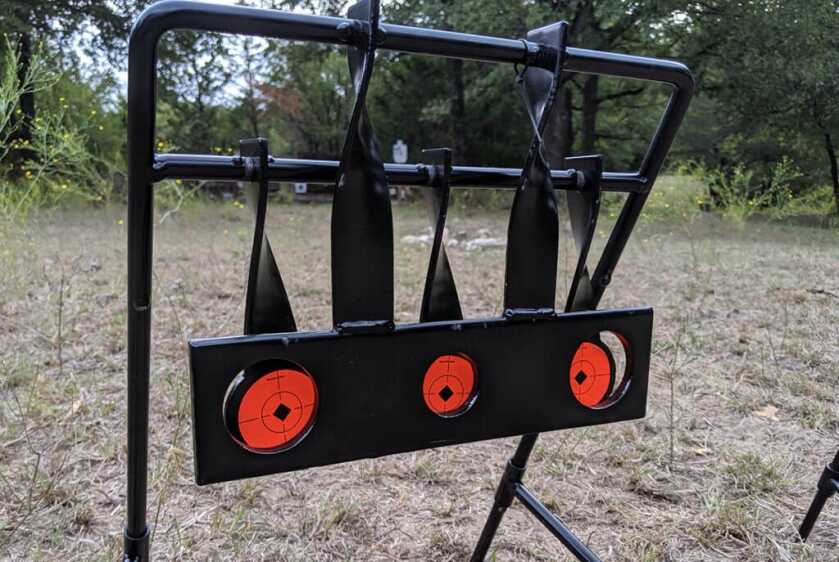
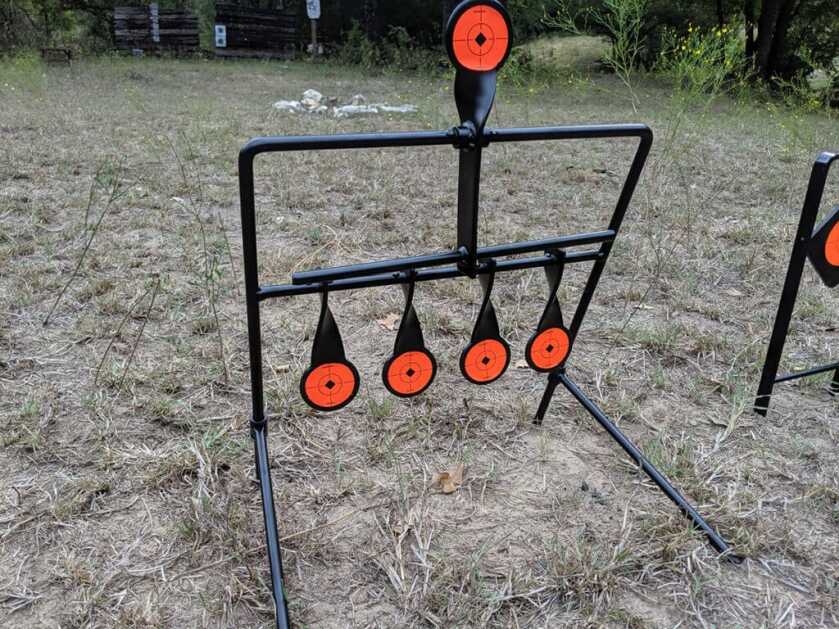
The level of difficulty can be increased by adding speed or distance to the equation. The targets are small enough that even backing up a few yards with a handgun makes hits more difficult. And competing against someone else with two Gallery targets, for example, would hone the handgun or rifle skills of all but the most experienced shooters.
Do They Work?
You shouldn’t worry about durability as long as you stick to .22LR. I shot the heck out of these targets with rifles and handguns using both standard and high-velocity cartridges, and I didn’t notice any denting or cracking. If the targets are going to be kept outside, however, keep an eye out for rust – the black paint comes off immediately.
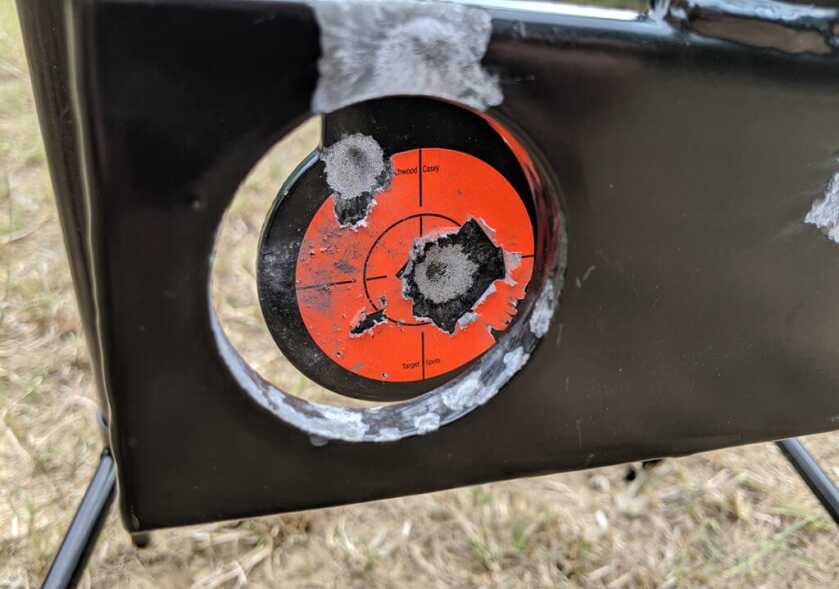
Set up is easy. The Diamond and Spinner are staked into the ground, so depending on the state of the soil at your range, you may need to bring a rubber mallet. The Back Drop and Gallery don’t need to be staked, but they stood up fine throughout the course of my testing.
I didn’t have any trouble with the King of Diamonds, Spinner, or Back Drop targets. They functioned perfectly with rifles and handguns at various distances.
For the Gallery to function properly, however, the bullet must be traveling at a certain speed. As you can see in the video below, when I tried to use the target with a rifle at 50 yards, the metal arms swung too fast to be caught by the crossbar.
The target worked perfectly with a handgun from about 7 yards, which means the ideal velocity is something around 1,000fps. I confirmed this by backing up to 100 yards with a rifle, and the targets performed as advertised.
Rimfire competitions like the NRL22 are all the rage these days, and Birchwood-Casey’s targets can help you practice. The Diamond features a 5.5” paddle; the spinner features 3.625”, 2.25”, and 1.625” paddles; the Back Drop features target holes measuring 2”, 1.5”, and 2”; and the Gallery uses 2.5” paddles. Many of the targets used in NRL22 competitions are in the 2-5” range, especially between 50 and 100 yards. These targets would be a great way to train for that and any other .22LR competition, and you can check out the NRL22 courses of fire here.
Why You’re Really Reading This Review

Birchwood-Casey’s rimfire targets do everything they’re designed to do. But I had the same question you do – how do they hold up against 9mm and .45ACP?
In a word, not great. Using 124g FMJ 9mm and 230g FMJ .45ACP, I blasted away at all four targets. All but the King of Diamonds saw significant denting on each paddle, and every target fell over even after shots in the center circle.

I initially hoped that the King of Diamonds might hold up. It uses thicker metal than the paddle targets, and neither the 9mm nor the .45ACP caused any denting. It may last longer, but I soon noticed that the ears used to attach the target to the frame had begun to bend. The metal thickness tapers down towards the ears, and if they’re going to break, it’s going to be at those points.
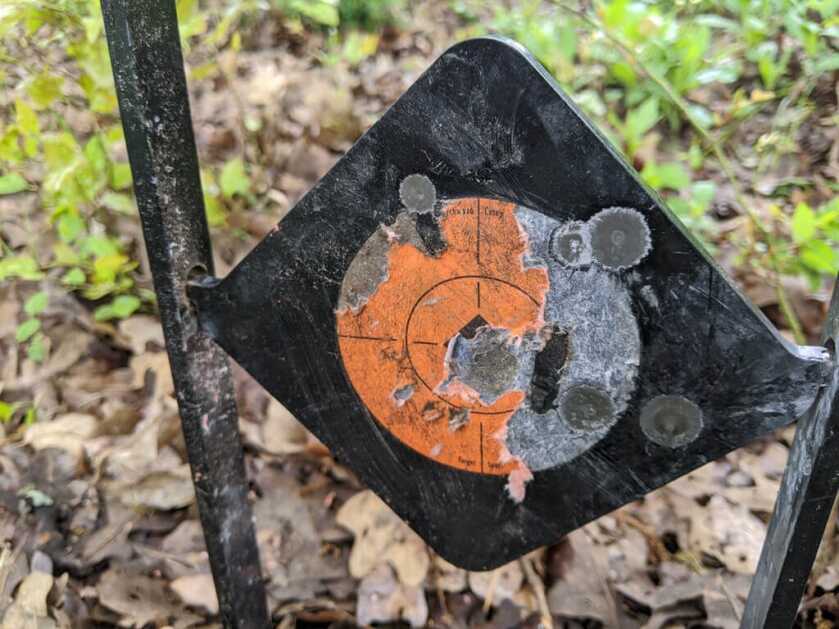
All this being said, none of the targets fell apart immediately. They still functioned properly (except when they fell over), and I wasn’t able to destroy any of them during my trip to the range.
Of course, they aren’t designed for anything beyond rimfire cartridges. For that purpose, they’re a nice option. If you’re an experienced shooter looking to start rimfire training or a new shooter just looking to have some fun, take a look at these little targets from Birchwood-Casey.

I’ve used several of these Birchwood Casey targets, and as long as you stick to .22’s, they’re great. Get a couple of spare sticker packs to replace the orange target stickers, and a can of gloss black Krylon, and you’ll have very serviceable targets for a long time. The article didn’t mention it, but B.C. also makes some pretty cool roller-ball reactive targets. Again, .22’s only, but it’s fun and I’ve trained many a young new shooter for not much money with these things. Having said that, I keep some AR-500 steel plates for the center-fire fun too.
Sticks in a pond? Don’t do it.
Bullets ricochet off water.
I’m glad somebody else noticed that